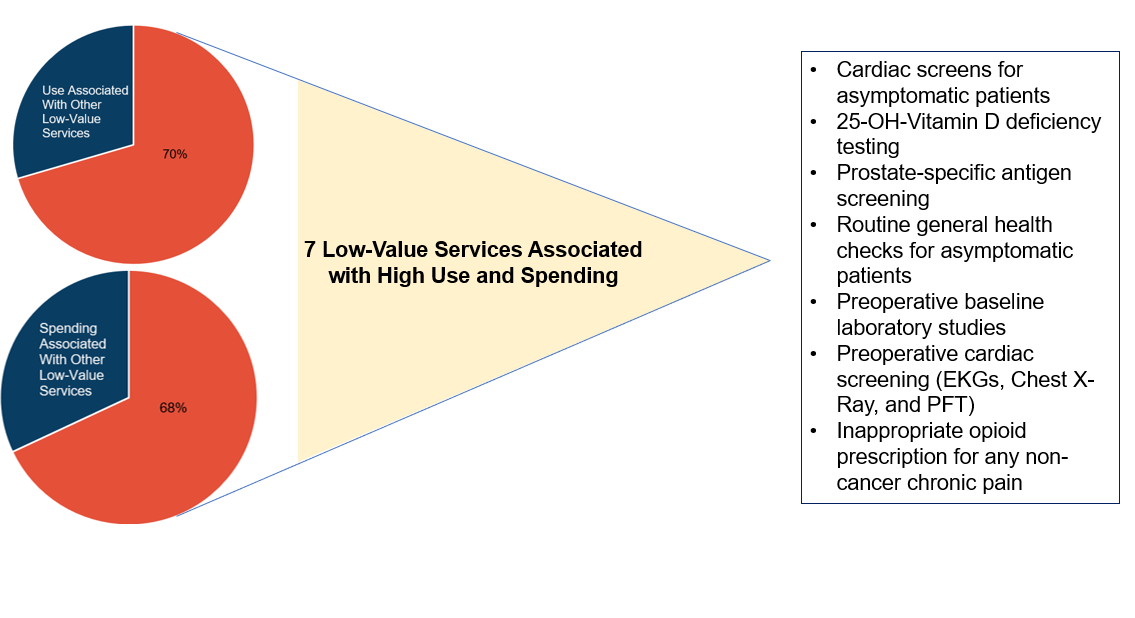There is substantial evidence that people in the U.S. receive health care services judged to be of low-value. These services are identified as low value based on recommendations from the U.S. Preventive Services Task Force (USPSTF) and professional medical societies that there is little to no clinical value associated with their provision and potential for harm in specific clinical scenarios. These services are a source of inefficiency in the health care system and can leave patients susceptible to financial, emotional, and health-related consequences.
In this report, we examined the use of and spending on low-value care in 2019 (prior to the COVID-19 pandemic) using the Health Care Cost Institute’s (HCCI’s) dataset of health care claims from over one-third of individuals with employer-sponsored insurance (ESI). To identify low-value care, we used the Milliman Health Waste Calculator, which measures the provision of and spending on 58 services determined to be low-value based on clinical evidence and guidelines. Since more people in the U.S. get insurance through an employer than any other source, a better understanding of the provision of these services among this population can help policymakers, payers, and employers develop a strategic response to reduce low-value care.

